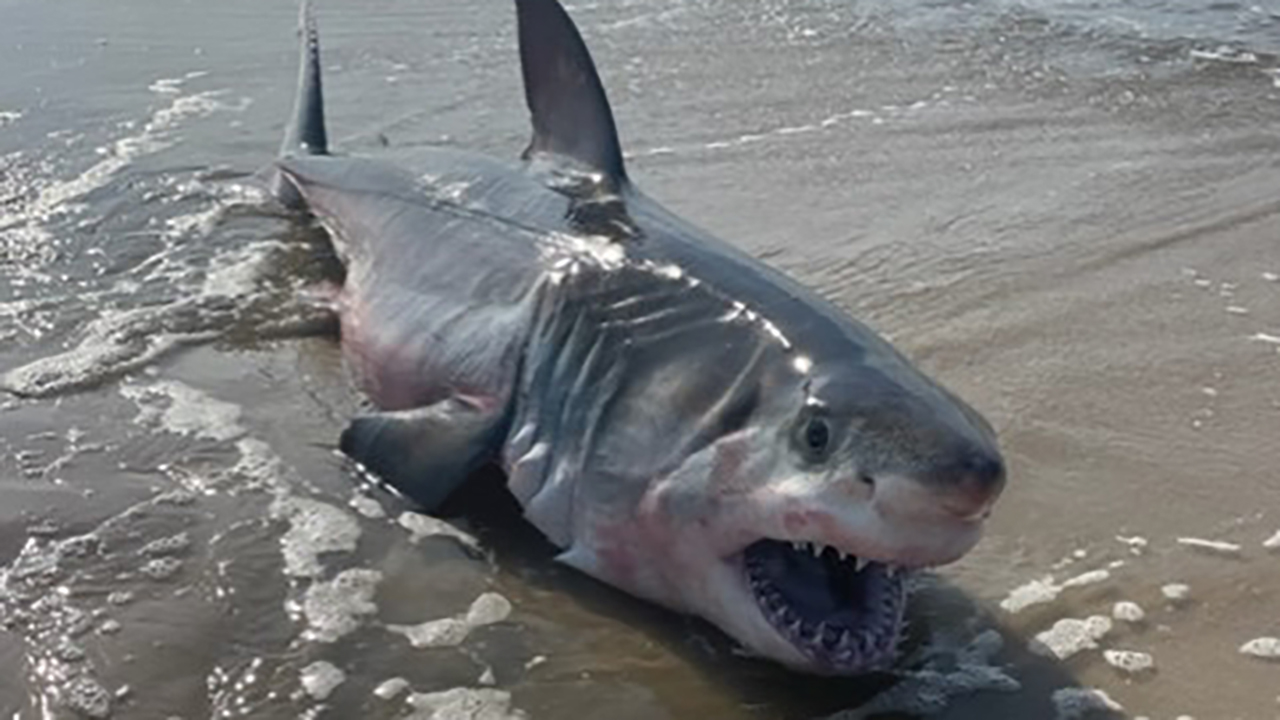Scientists have an explanation why there is an increase of shark attacks off East Coast
Climate change may play a factor in sharks venturing closer to shore.

Underwater creatures that have been dominating the oceans since before the dinosaurs roamed the earth have been causing quite a stir this summer with what seems like an increase in interactions with beachgoers.
An uptick in human-shark interactions has been occurring on the shores of the Atlantic Ocean off Long Island, New York -- so much so that beaches have closed as surfers, lifeguards and swimmers alike suffer bites from curious sharks in search of food.
At least five shark attacks have occurred in the Northeast since June 30. Further south in Keaton Beach, Florida, a teen survived a shark bite after punching the shark in the nose. On Wednesday, a dead great white shark washed ashore on Kismet Beach on Fire Island, a barrier island in New York.
MORE: Teenage girl speaks out after surviving shark attack at Florida beach

The increase in activity may have those seeking relief from the sweltering heat whether it is safe to venture to the beaches this summer.
Here is why there seem to be more shark attacks on the East Coast this summer, according to experts:
Global warming may play a factor
While there is no data to suggest climate change is responsible for pushing sharks closer to the shore, there may be other factors in which warmer waters cause sharks to venture near human beings, James Sulikowski, marine biologist and founder of Arizona State University's Sulikowski Shark and Fish Conservation Lab, told ABC News.
Much of marine life existing beneath the surface are tied to specific ranges of temperature, meaning that species are going to rearrange their locations as conditions change, Mike Heithaus, a marine biologist at Florida International University, told ABC News.
"So as we see warmer waters, we're seeing marine species expand their ranges are shifting their ranges," he said.
SEE ALSO: Dead shark appearing to be great white washes up on Long Island beach

Sharks tend to prefer cooler waters, the experts said, so it could be possible they are traveling farther north earlier in the year as they seek more desirable temperatures.
On the West Coast, juvenile great white sharks are increasingly moving north as the waters of the Pacific Ocean warm, a study published last year in Nature Scientific Reports found after a dramatic increase in young great whites have been reported off Monterey Bay since 2014.
The majority of bites are by accident
The behavior of the prey sharks seek is also changing as ocean waters warm, causing the prehistoric predator to chase them, the experts said.
On Long Island, there has been "nothing unusual," especially given that there is a lot more wildlife off the south shore, Gavin Naylor, director of the Florida Program for Shark Research at the Florida Natural Museum of History, told ABC News. A region just off the coast of Long Island also served as a nursery for sand tiger sharks several years ago, a species believed to be responsible for one of the recent bites, Naylor said.
The juveniles, which are fairly autonomous and independent after they are born, are more likely to make mistakes than their adult counterparts, Naylor said.
In addition, efforts to clear up waterways in major port cities like the Tristate area have led to cleaner waters and a rebound in marine life, Sam Muka, a professor of marine science history at the Stevens Institute of Technology in Hoboken, New Jersey, told ABC News.
WATCH | 'Look at this monster!': Great white shark spotted along Jersey Shore

Up until about two decades ago, New York and New Jersey historically dumped its trash as far as 204 miles into the ocean, Muka said. There are theories that sharks are not so much moving northward because of climate change but rather returning to waters they previously frequented, Muka said.
Another reason why there may appear to be more sharks off the East Coast is due to an increase of conservation in the U.S., Heithaus said. While shark populations are still considered critical globally, marine biologists are beginning to see the effects of effective fisheries management, which is then leading to population increases across a number of species that provide food for sharks, Heithaus said.
"Nature is pretty resilient if you give it half a chance," Naylor said.
Sulikowski described the vast majority of attacks as likely a shark, especially a juvenile, "taking an exploratory bite." Once the shark determines that the human isn't what they want to eat, isn't part of their diet, they swim away, leaving puncture wounds or scrape marks in their wake, Sulikowski added.
"For the most part, these are these smaller coastal sharks that are probably just getting confused," he said.
MORE: With shark bites increasing, what to know if you encounter one while swimming

It is also conceivable that some of the shark attacks occur at the surf zone because the mixture of water and sand where the waves break make it difficult for the sharks to see and allow them to mistake human hands and feet for fish, Naylor said, adding that more than 60% of bites occur in low-visibility water.
"They're not mindless killing machines," Heithaus said.
Sharks are still a fairly mysterious creature, Muka said, adding it's still difficult to tag them and study things like where they are breeding, hunting and the way they behave.
"There's all these kinds of unknown variables, including climate change, which is continuing in a way that we just can't really predict," Muka said.
More people in the waters leads to an increase in encounters
It is hard to determine whether there is an actual increase in human-shark interactions based on the activity in one summer, the experts said.
While there have been several shark bites in a short period of time off the East Coast, there has not been an overall increase in shark bite activity globally, Naylor said.
"There's a difference between local phenomena and global patterns," Naylor said.
The bites tend to begin at the beginning of June, when there is a surge of people flocking to the beach. Every year in some part of the world, there tends to be two or three shark bites in succession, Naylor said, citing the museum's International Shark Attack File, a database that tracks shark bites around the globe.
In the past 30 days, when the shark bites first began, there was an increase in temperatures, and heat waves have been rolling through the country ever since.
The summer warmth, combined with the aftermath of the pandemic, is bringing people to the beaches in droves, Heithaus said.
"More people at the beach, more people in the water -- that's potential to increase interactions," Sulikowski said.
Turner Hoenig, a 32-year-old surfer who commutes regularly from Manhattan's Upper East Side to Rockaway Beach in Queens, told ABC News that the surfing community is incredibly aware that they share the ocean waters with sharks and the risk associated with that.
"You just kind of understand that if you're out on the water, there are sharks," he said. "You cannot do anything about that. If you're putting yourself out there, you're getting into their territory."
The scientists stressed that sharks, for the most part, are not to be feared, reminding beachgoers that they are essential to keeping oceans healthy. Every year, there are about six fatalities from shark encounters, compared to 20 people who die each year from lightning strikes, Naylor said.
"We need sharks in the ocean to keep it clean, regulate it, make sure the ecosystems are clean and healthy," Sulikowski said. "We as human beings enjoy that healthy environment."










